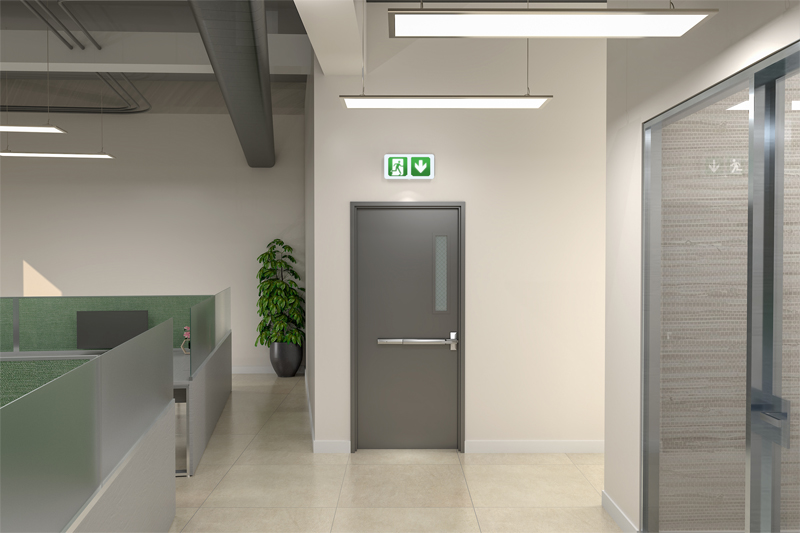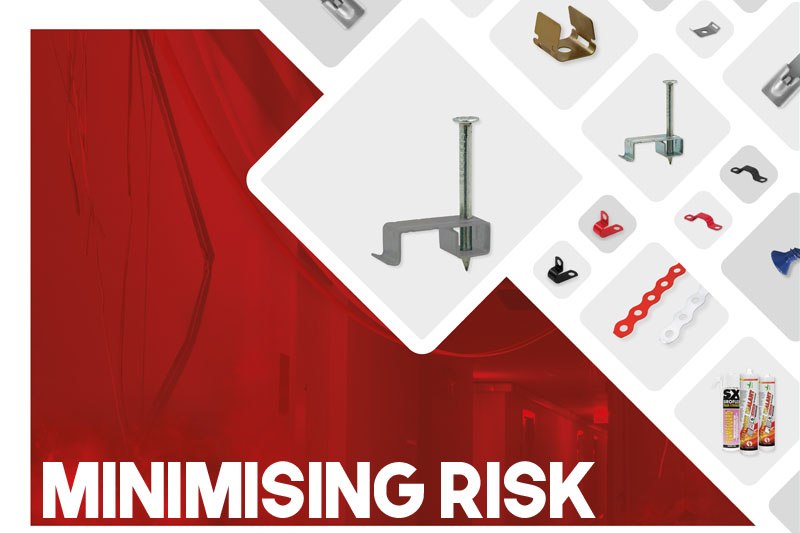The regular testing and maintenance of emergency lighting systems is a legal requirement but often the process is flawed, putting lives at risk. In this article, Chris Anderson, Technical Manager at Ansell Lighting, highlights the issues that can compromise the reliability of emergency lighting systems and explores the emerging new methods of control and monitoring set to overcome them.
A crucial part of ensuring an environment is safe when normal illumination fails, emergency lighting is a legal requirement in all public, commercial and high occupancy residential buildings. Designed to protect occupants when there is sudden darkness caused by a power cut, fire or other circumstance, emergency lighting should provide sufficient light for long enough to enable all occupants to evacuate a building safely.
When embarking on an emergency lighting installation, one of the key considerations is ease of maintenance and testing, so it is vital that this is part of the sales message for the wholesaler.
So, what is required? Emergency lighting systems must be tested and maintained at regular intervals by law and in accordance with the latest regulations to ensure they are fit for purpose. Emergency light testing is a central part of regular building maintenance and most insurance companies require it. Often stipulated within the design brief, commonly building users can opt for emergency lighting systems that either require manual testing or incorporate self-test products.
When a manual test is carried out, once all lighting circuits and luminaires have been isolated, a tester has to pass through the whole building or circuit, checking that each emergency luminaire is operating correctly. The mains supply is then restored and the whole building or circuit must be walked again to check that the emergency lights have returned to being operational.
Cost effective maintenance
An obvious solution is the self-test lighting systems which allow for more cost effective maintenance. When the unit is first installed the fitter can randomly select a test date of between 200 and 365 days. Once this date is set it will continue to test at the same time every year for a full three-hour test. Every 30 days the installation will also be automatically tested for 10 minutes. A small LED button on the fitting will illuminate to show either regular function or that a fault has occurred.
Whilst self-test systems clearly have the advantage over manual compliance testing, it too can still be imperfect. In both cases, if buildings are unoccupied or being renovated for example, it may not be possible to check luminaires often enough to comply with legal requirements and assess whether emergency lighting systems are up to code.
The consequences for business owners and responsible persons who fail to comply with fire safety legislation and emergency lighting rules can be very serious. Ultimately, a fire can have tragic consequences if occupants cannot safely escape with owners and those in positions of responsibility being liable to prosecution. Unfortunately, a lack of sufficient emergency lighting remains a regular cause of health and safety cases coming before the courts and a guilty verdict can result in hefty fines or building owners and landlords facing imprisonment.
However, advancements in new technology are set to provide a solution to these problems entirely, making the control and maintenance of emergency lighting systems more straight forward, cost effective and timely.
Visual display
Providing central monitoring capability, a ‘dashboard’ can now provide a visual display of a building’s lighting system in one place. This enables all connected emergency lighting systems to be tested wirelessly and automatically at the touch of a button and can highlight remotely whether an individual luminaire or driver is outside of expected operational parameters.
Improving efficiency, they can provide insight and access to emergency lighting systems throughout a building or an estate – not just singular installations – improving the speed of testing and maintenance and removing the need for costly and time-consuming manual checks.
Dashboards are also a great support when it comes to management and reporting. Alongside providing full real time visibility of compliance status at all times, dashboards store historical test reports and data logs for all connected buildings and systems. This enables those responsible for building maintenance to access information whenever it is required.
With economic pressures being felt across the board and working practices changing, the use of dashboards is set to become increasingly popular amongst building managers and those working in the emergency lighting maintenance arena.
For more information, click here






